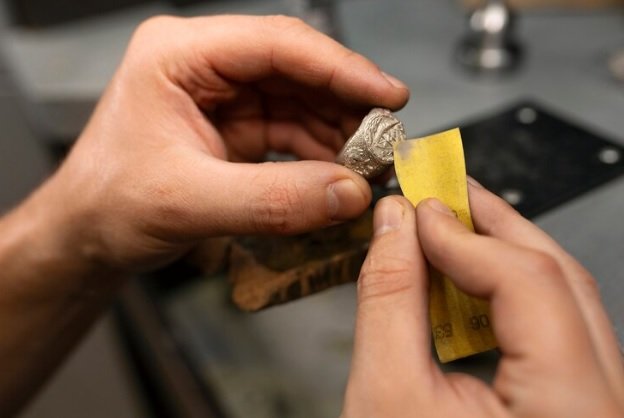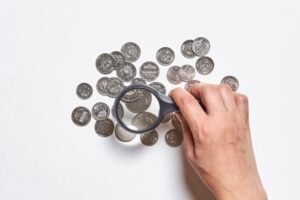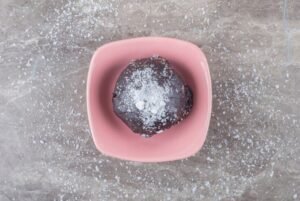
Silver Coins
How to clean silver coins are cherished by collectors and investors alike for their historical value, aesthetic appeal, and precious metal content. Over time, these coins can tarnish and lose their luster due to exposure to air, moisture, and handling. Cleaning silver coins can restore their shine, but it’s a task that requires careful consideration and proper techniques to avoid damaging the coins. This guide will walk you through the various methods of cleaning silver coins, the materials you’ll need, and tips to ensure you preserve the value and integrity of your collection.
Understanding Silver Coin Tarnish
Tarnish on silver coins is primarily caused by a chemical reaction between silver and sulphur compounds in the air, resulting in a layer of silver sulphide on the coin’s surface. While tarnish is not harmful to the silver itself, it can affect the coin’s appearance. It’s important to note that tarnish can sometimes add to a coin’s character and historical value, and removing it might reduce its numismatic value.

When to Clean Silver Coins
Before you begin cleaning your silver coins, ask yourself whether it’s necessary. In many cases, it’s best to leave the tarnish intact, especially for older or rare coins. Cleaning can sometimes reduce a coin’s value, particularly if it’s done improperly. However, if the tarnish is severe and detracts from the coin’s appeal, or if the coin has dirt or grime that obscures its details, cleaning might be justified.
Materials Needed for Cleaning Silver Coins
To clean silver coins safely, you’ll need the following materials:
- Soft cotton gloves
- Distilled water
- Mild dish soap
- Soft-bristled brush (such as a baby toothbrush)
- Non-abrasive cloth or microfiber cloth
- Baking soda
- Aluminium foil
- Plastic container
- Coin dips or commercial silver cleaner (optional and with caution)
Methods for Cleaning Silver Coins

1. Gentle Hand Cleaning
Step-by-Step Instructions:
- Wear Gloves: Always wear soft cotton gloves to avoid transferring oils and dirt from your hands to the coins.
- Rinse with Distilled Water: Rinse the coin under a gentle stream of distilled water to remove loose dirt and debris. Avoid using tap water as it contains minerals that can leave deposits on the coin.
- Mild Soap Solution: Prepare a mild soap solution by mixing a few drops of mild dish soap with distilled water. Soak the coin in the solution for a few minutes.
- Brush Gently: Use a soft-bristled brush to gently scrub the coin, focusing on areas with dirt or grime. Be cautious and avoid scrubbing too hard, as this can scratch the surface.
- Rinse and Dry: Rinse the coin thoroughly with distilled water to remove any soap residue. Pat it dry with a non-abrasive cloth or allow it to air dry on a soft surface.
2. Baking Soda and Aluminum Foil Method
This method uses a chemical reaction to remove tarnish without abrasive scrubbing.
Step-by-Step Instructions:
- Line a Container with Aluminum Foil: Line the bottom of a plastic container with aluminium foil, shiny side up.
- Place Coins on the Foil: Place the silver coins on the aluminium foil, ensuring they don’t touch each other.
- Prepare Baking Soda Solution: Boil enough distilled water to submerge the coins. Dissolve a tablespoon of baking soda per cup of water.
- Pour Solution over Coins: Pour the baking soda solution over the coins, ensuring they are fully submerged. You should see bubbles forming as the tarnish is lifted.
- Soak and Rinse: Let the coins soak for a few minutes, then carefully remove them and rinse with distilled water.
- Dry the Coins: Pat the coins dry with a non-abrasive cloth or let them air dry.
3. Commercial Coin Cleaners and Dips
Commercial coin cleaners and dips are available, but they should be used with caution as they can be harsh and may damage the coins if not used properly.
Step-by-Step Instructions:
- Read Instructions: Carefully read and follow the instructions on the product label.
- Dip and Rinse: Dip the coin in the cleaner for the recommended amount of time, usually just a few seconds. Rinse thoroughly with distilled water immediately after.
- Dry the Coins: Pat the coins dry with a non-abrasive cloth or let them air dry.
Tips for Cleaning Silver Coins
- Avoid Abrasive Materials: Never use abrasive materials like toothpaste, baking soda paste, or metal polish. These can scratch the surface of the coin.
- Test a Small Area First: If you’re unsure about a cleaning method, test it on a small, inconspicuous area of the coin first.
- Handle with Care: Always handle coins by their edges to avoid leaving fingerprints on the surfaces.
- Use Distilled Water: Distilled water is free from minerals and impurities that can leave deposits on the coins.
- Consult a Professional: If you have valuable or rare coins, consider consulting a professional numismatist or conservator before attempting to clean them.
Preserving Silver Coins After Cleaning
Once your silver coins are clean, proper storage is essential to prevent future tarnish and damage. Here are some tips for preserving your cleaned silver coins:
1. Proper Storage
- Use Coin Holders: Store coins in individual coin holders or flips to protect them from handling and environmental exposure.
- Avoid PVC: Use holders made of materials that do not contain PVC (polyvinyl chloride), which can damage coins over time.
- Climate Control: Store coins in a cool, dry place with stable temperature and humidity levels. Avoid areas prone to temperature fluctuations, such as attics or basements.
2. Handling Precautions
- Wear Gloves: Always wear gloves when handling coins to prevent oils and dirt from transferring to the surfaces.
- Handle by Edges: Hold coins by their edges to minimize contact with the surfaces.
3. Regular Maintenance
- Inspect Regularly: Periodically inspect your coins for signs of tarnish or damage.
- Dusting: Use a soft, non-abrasive cloth to gently dust the coins if needed.
4. Anti-Tarnish Products
- Silica Gel Packs: Place silica gel packs in your coin storage area to absorb moisture and reduce the risk of tarnish.
- Anti-Tarnish Strips: Use anti-tarnish strips or cloths designed to neutralise tarnish-causing compounds in the air.
Conclusion
Cleaning silver coins is a delicate task that requires careful consideration and the right techniques. While it’s tempting to restore the shine to your coins, it’s important to weigh the potential impact on their value and historical significance. By using gentle cleaning methods and taking proper precautions, you can enhance the appearance of your silver coins while preserving their integrity. Remember, when in doubt, it’s always best to consult a professional before attempting to clean valuable or rare coins. With the right approach, you can enjoy the beauty and history of your silver coin collection for years to come.









